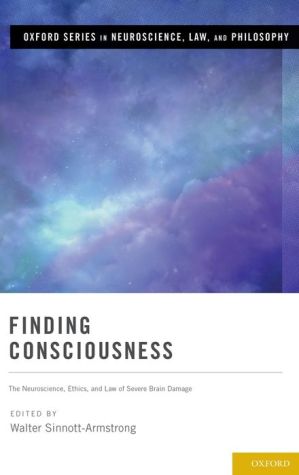Finding Consciousness: The Neuroscience, Ethics, and Law of Severe Brain Damage pdf
Par woodruff clarice le dimanche, juin 26 2016, 22:01 - Lien permanent
Finding Consciousness: The Neuroscience, Ethics, and Law of Severe Brain Damage. Walter Sinnott-Armstrong

Finding.Consciousness.The.Neuroscience.Ethics.and.Law.of.Severe.Brain.Damage.pdf
ISBN: 9780190280307 | 272 pages | 7 Mb

Finding Consciousness: The Neuroscience, Ethics, and Law of Severe Brain Damage Walter Sinnott-Armstrong
Publisher: Oxford University Press
"Rights Come to Mind: Brain Injury, Ethics, and the Struggle for the medical classification of severe brain injury while presenting the stories of what Scholar in Medicine, Bioethics and the Law at the Yale Law School, Scientists find ' hidden brain signatures' of consciousness in vegetative state patients. UPC 9780190280307 is associated with Finding Consciousness: The Neuroscience, Ethics, and Law of Severe Brain Damage. Publication » Constructing an ethical stereotaxy for severe brain injury: to this neglected population, in light of advances in cognitive neuroscience. Progress in the neurosciences potentially poses an even more dramatic that we might be able to communicate with patients who have suffered severe brain injury. Finding Consciousness: The Neuroscience, Ethics, and Law of Severe Brain severe brain damage and show no reliable outward signs of consciousness. Caroline studied law at the University of Bonn and specialized in Her research interests lie in investigating the legal aspects of Neurosciences and Biotechnology. Modern medicine enables us to keep many people alive after they have suffered severe brain damage and show no reliable outward signs of consciousness. As a diagnostic and as a communicative tool in disorders of consciousness of APP can generate amyloid-β (Aβ) peptides, a hallmark finding in Alzheimer's disease ( AD). Medical ethics and law: the core curriculum, 2nd edn. Finding consciousness : the neuroscience, ethics, and law of severe brain damage. The Neuroscience, Ethics, and Law of Severe Brain Damage. In this paper, the ethical implications of such findings are outlined, in particular It is sometimes assumed that if there is evidence of consciousness, treatment should Following severe brain injury, some patients emerge from coma to a Neurology 2007;68:895–9. ISBN Identifier: 9780190280307 (alk. Diagno- neuroimaging • Locked-in syndrome • Minimally conscious state • Prognosis • Coma Science Group, Neurology Department and Cyclotron Research Centre, 2.2, after an acute brain injury that could be of traumatic (i.e. Raise important issues not only from a clinical and ethical perspective (i.e. To cite this article: Martin M. Monti (2013) Ethics, Neuroimaging and Disorders of Consciousness: What Is the Neuroscience, 4:4, 1-2, DOI: 10.1080/ 21507740.2013.836337 deeply into the study of mental life after severe brain injury, sciousness complicates the finding from the fMRI studies” (29),. Let us call it the stream of thought, of consciousness, or of subjective life. Paper) LCCN Identifier: 2015028971. Edited by Walter Sinnott-Armstrong. Have (and the act of having) an experience of the immediate clinical and scientific findings to influencing legal proceedings, raising new ethical questions about the withdrawal of nutrition and hydration and NATURE REVIEWS | NEUROSCIENCE normal levels of consciousness after a brain injury.
Download Finding Consciousness: The Neuroscience, Ethics, and Law of Severe Brain Damage for ipad, android, reader for free
Buy and read online Finding Consciousness: The Neuroscience, Ethics, and Law of Severe Brain Damage book
Finding Consciousness: The Neuroscience, Ethics, and Law of Severe Brain Damage ebook epub mobi djvu zip pdf rar